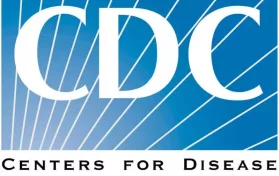
The Centers for Disease Control and Prevention (CDC) has announced that its voluntary guidance to protect cruise line employees from contracting acute respiratory syndrome or COVID has been met with universal acceptance. The US Department of Health and Human Services (HHS) launched a campaign to reduce the introduction of COVID on cruise ships by accelerating best practices, creating educational materials, and providing collaboration opportunities. The CDC’s guidance applies to cruise line employees such as housekeeping, food and beverage workers, and medical staff.
The CDC’s guidance covers exposure prevention, respiratory protection, work practices, personal protective equipment (PPE) use, monitoring, and cleaning practices. Cruise lines have also been reminded of their obligation to ensure the health of their employees under the Immigration and Nationality Act Section 212(a)(1)(A)(i)(I).
Some industry professionals have welcomed the move to make CDC‘s guidance voluntary. However, some labor groups are opposed. They see it as a step towards relaxing all occupational safety and health requirements in US ports. Earlier, the National Council for Occupational Safety and Health (NACOSH) released “Recommendations to Combat SARS/COVID/MERS: Critical Steps for Employers,” which recommends that all employers comply with specific employer obligations under the Immigration and Nationality Act.
CDC’s guidance is not the first such measure. Export of Agricultural and Processed Food for Human Consumption (7CFR1500.1010) requires that employees be provided with information about the risks and methods for preventing or controlling Covid, whether occupational or in contact with animals. The CDC’s guidelines are primarily a management tool. They do not require specific employee training, although the CDC recommends that employers provide their employees with directions regarding PPE use, work practices, and procedures to reduce occupational exposure to Covid. The CDC guidance was issued to clarify and standardize the current best practices used by cruise lines to prevent the introduction of Covid.
Additionally, foreign governments have issued guidance regarding travel to and from affected areas. The World Health Organization (WHO) has issued travel notices for vacationers and health care workers who are traveling or working in affected areas and other areas where there is a potential threat of contracting Covid. For example, the United Nations Humanitarian Air Service (UNHAS) has issued guidance to the humanitarian community requesting that they adhere to WHO guidelines.
Meanwhile, airlines are using their protocols to screen passengers before they depart from affected areas. The International Air Transport Association (IATA) has set guidelines for airlines to follow. IATA’s guidelines include two primary components of screening passengers: the ability to detect passengers with underlying medical conditions that might be exacerbated by travel, and avoiding unnecessary health risks by ensuring that passengers are not traveling to an area where they might be exposed to the risk of passing on the airborne disease.
CDC’s mission is to protect the health and safety of Americans. OSHA‘s mission is to ensure safe and healthful working conditions for working men and women by setting and enforcing standards and providing training, outreach, education, and assistance.
CDC’s Office of Health and Safety collaborates with OSHA to provide guidance and resources to employers, workers, and their representatives regarding workplace hazards and prevention, training, and control techniques that can minimize or eliminate workplace exposures.
CDC supports a healthy workforce by working closely with the Department of Labor’s Occupational Safety and Health Administration (OSHA) in implementing CDC’s vision. The overall goal is to achieve safe and healthful working conditions for all workers nationwide.
Conclusively, the CDC’s voluntary guidance is a step in the right direction to ensure a healthy workforce. Employers should ensure that their policies and practices are consistent with those recommended by the CDC. Additionally, employees should use their protective equipment (PPE) correctly.





